Introduction to the History of Kansas City’s Country Club Plaza
Introduction
Author-Uploaded Audio
Local historian Bill Worley describes the origins of the Country Club Plaza
Text-to-speech Audio
The Country Club Plaza is the first planned, suburban shopping center in the United States and was constructed in the early 1920s by Kansas City real estate developer J. C. Nichols. A central figure in Kansas City’s history, Nichols shaped the city's landscape with several suburban construction projects, including this shopping center which was designed in a unified, Spanish architectural style and was created to be automobile friendly with wide roads and ample parking. Today, the plaza is Kansas City's premier shopping center, home to many luxury retail businesses, entertainment venues, restaurants, and offices. It is also notable for its annual Christmas light displays, a tradition dating back to 1925.
Images
The Country Club Plaza was designed using a unified Spanish architecture and includes green space and public art.
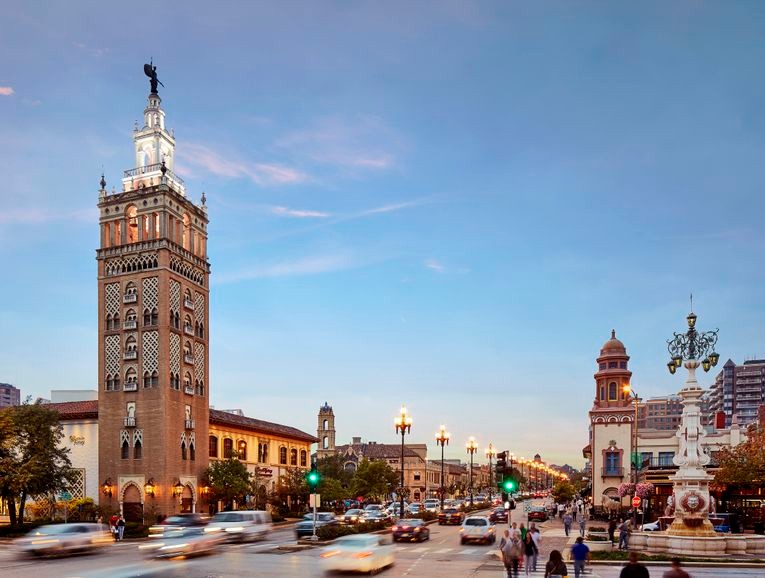
The heart of the plaza along 47th Street
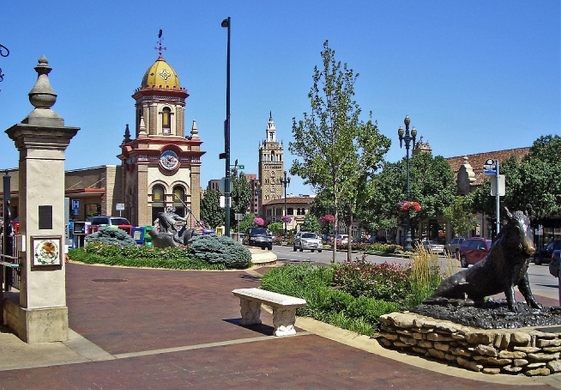
A 1922 aerial view of the land that became the Country Club Plaza. Courtesy of the State Historical Society of Missouri.
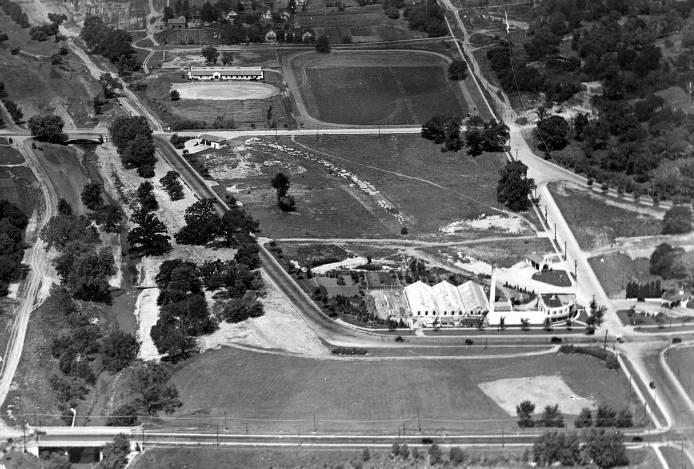
A postcard from the early 1920s shows the start of the Country Club Plaza. The white building with the smoke stack was the first building on the site, built in 1916 before J.C. Nichols acquired it. Courtesy of Missouri Valley Special Collections, Kansas City Public Library.
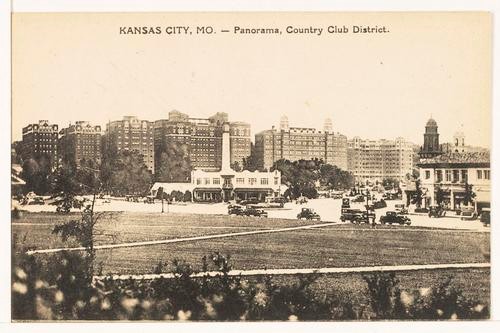
A portrait of Country Club Plaza developer Jesse Clyde "J.C." Nichols.
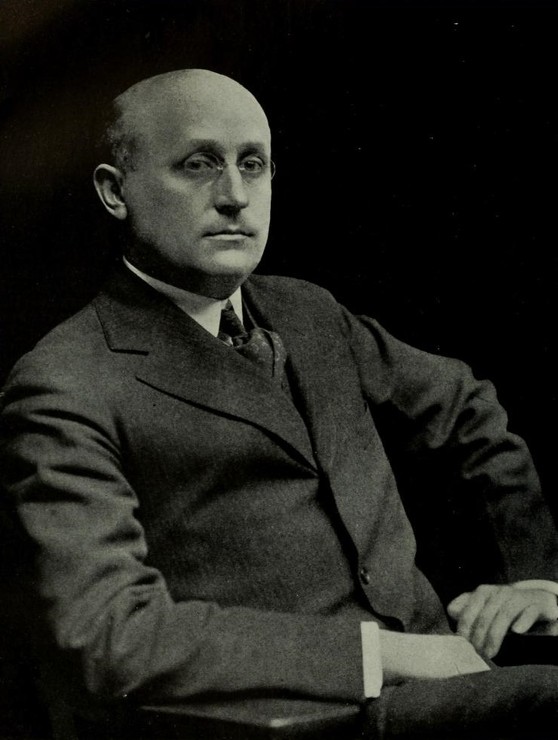
Edward Buehler Delk was the Country Club Plaza's leading architect. He provided the Spanish-inspired concept and designed the first buildings.
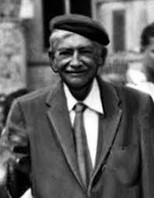
The Country Club Plaza logo.
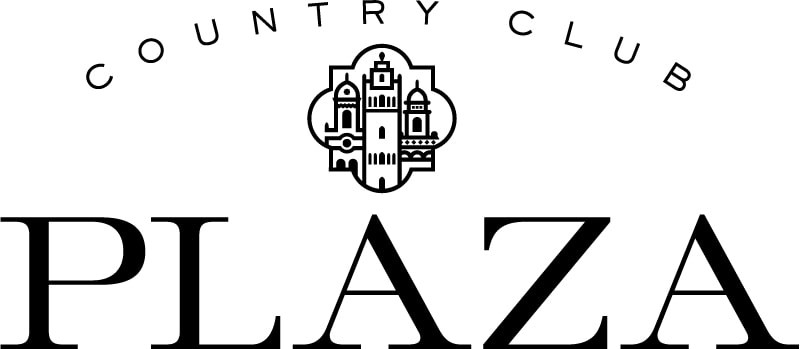
Backstory and Context
Author-Uploaded Audio
Author LaDene Morton offers an explanation why the Plaza shopping district has survived over time
Text-to-speech Audio
The Country Club Plaza was concepted by prominent local real estate developer Jesse Clyde “J. C.” Nichols (1880-1950). Nichols was a strong proponent of the suburbanization in Kansas City, and during the early twentieth century he developed many middle- and upper-class subdivisions. His planned neighborhoods featured quality homes, green spaces, automobile-friendly roads, and attractive landscaping and architecture.
From 1912 to 1921, Nichols acquired parcels of land in the Brush Creek valley. The area was generally considered to be an eyesore by locals. It was home to a dump, a hog farm, brick kilns and rock quarries. It was loud, odorous, and filled the skies with Black smoke. Nearby residents of the Country Club District complained of Brush Creek frequently. After he purchased the land, Nichols planned to eradicate the unsightly businesses and develop a commercial district to complement his suburban, residential neighborhoods.
Construction of the $5 million, 30-acre Country Club Plaza began in 1922. The plaza became the first planned, suburban “shopping center,” a term that Nichols coined himself. The center boasted a single, unified architectural style, Spanish Baroque Revival, which drew inspiration from cities in Europe, South America, and Mexico for the buildings and landscape. Nichols and his architects based the plaza heavily on Seville, Spain in particular. Critics at the time of construction felt the plaza was doomed to failure because it was too far from Kansas City’s downtown and too far from the streetcar lines. Some even dubbed the project “Nichol’s folly.” However, Nichols made sure that the shopping center accommodated automobiles by incorporating wide roads and parking spaces. This made the plaza more accessible to the growing class of suburban commuters that Nichols courted. Within a few years, dozens of businesses filled the plaza, ranging from doctors offices, department and grocery stores, and restaurants and entertainment venues.
The Country Club Plaza has had much financial success over the century. Even after a massive flood that caused significant damage to the plaza on September 12, 1977, the district quickly recovered and most of its merchants rebuilt their shops. In the 1980s and 1990s, the plaza added more upscale businesses to compete with indoor shopping malls. In the early twenty-first century, the plaza expanded with the construction of new retail spaces, such as Valencia Place and the Granada Shops. Many annual traditions and events are carried out on the Country Club Plaza, including the Plaza Art Fair, the Easter Bunny statues, and the Plaza Lights.
Sources
Euston, Diane. “The Country Club Plaza: The Nation’s First Outdoor Shopping Mall.” Martin City Telegraph. December 26, 2019. Accessed August 28, 2021. https://martincitytelegraph.com/2019/12/26/the-country-club-plaza-the-nations-first-outdoor-shopping-mall/.
“In 1923, Work Began on First Block of Country Club Plaza.” Midtown KC Post. October 2, 2018. Accessed August 28, 2021. http://midtownkcpost.com/in-1923-work-began-on-first-block-of-country-club-plaza/.
McMahon, Heather N. “Country Club Plaza.” SAH Archipedia. Accessed August 28, 2021. https://sah-archipedia.org/buildings/MO-01-095-9050.
“One Man’s Vision Shapes the City.” Country Club Plaza, Internet Archive. Accessed August 28, 2021. https://web.archive.org/web/20130614090058/http://countryclubplaza.com/About-Us/One-Mans-Vision-Shapes-the-City.
Roe, Jason. “Let There Be Lights.” Kansas City Public Library. Accessed August 28, 2021. https://kchistory.org/week-kansas-city-history/let-there-be-lights.
Stevens, Sarah. “J. , C. Nichols and the Country Club District: Suburban Aesthetics and Property Values.” Kansas City Public Library. Accessed August 28, 2021. https://pendergastkc.org/article/jc-nichols-and-country-club-district-suburban-aesthetics-and-property-values.
“Today I Learned: The History Behind The Country Club Plaza. Visit KC. June 27, 2017. Accessed August 28, 2021. https://www.visitkc.com/2017/06/27/today-i-learned-history-behind-country-club-plaza.
“Walk Through Kansas City History.” Country Club Plaza, Internet Archive. Accessed August 28, 2021. https://web.archive.org/web/20111225011613/http://www.countryclubplaza.com/About-Us/History.
http://news.visitkc.com/facts/country-club-plaza
https://www.atlasobscura.com/places/country-club-plaza
https://cdm17228.contentdm.oclc.org/digital/collection/imc/id/17724/rec/9
https://kchistory.org/image/country-club-plaza-panorama
Missouri Valley Special Collections, Kansas City Public Library
Missouri Valley Special Collections, Kansas City Public Library
https://countryclubplaza.com/
